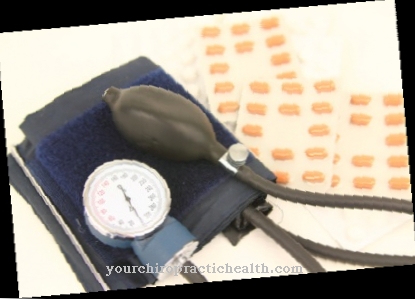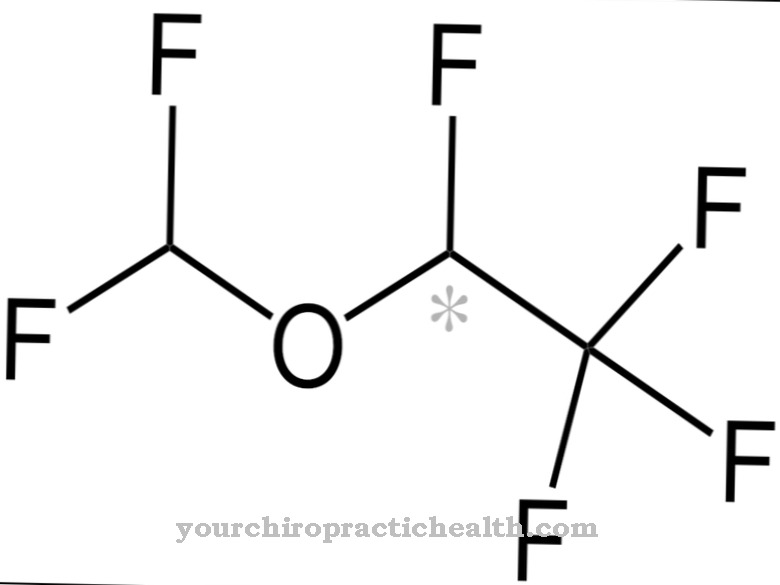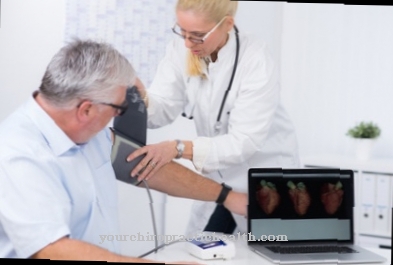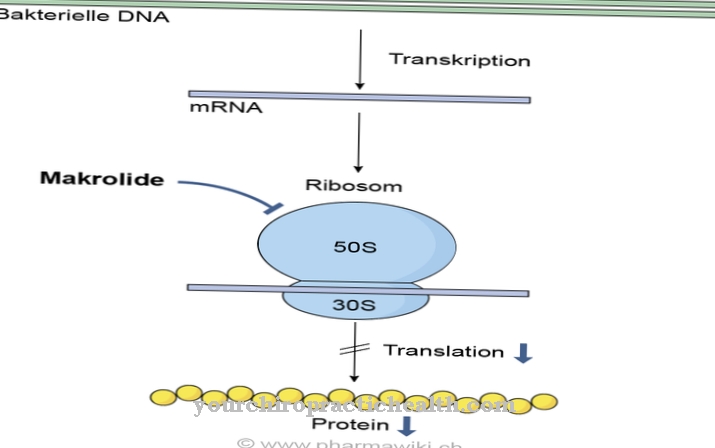Actinomycin D. is a cytotoxic antibiotic, also by the name Dactinomycin is known. Actinomycin D is used as a cytostatic agent to inhibit cell growth and division. Actinomycin D is used to treat cancer. It is available under the trade names Lyovac-Cosmegen® and Cosmegen®.
What is actinomycin D?

The peptide antibiotic actinomycin D is obtained from the soil bacteria Streptomyces parvulus. The active ingredient is made up of two cyclic peptides linked by a phenoxazine compound. The cytostatic was first described in 1949.
Initially, the scientists hoped to have found an antibiotic for treating bacterial diseases in actinomycin D. But it quickly became apparent how toxic the drug is for human cells.
Therefore, medical professionals soon began using it to treat various tumors instead. The cytostatic is intended to prevent the rapid growth of cancer cells in both adults and children during chemotherapy.
Pharmacological effect
Actinomycin D binds to the DNA (deoxyribonucleic acid) of the cells, which means that the double helix can no longer open. Experts refer to this process, in which an active substance attaches molecules to the DNA and links them, as intercalation.
Actinomycin D mainly binds to the guanine residues of the DNA. In this way, actinomycin D initially inhibits RNA synthesis at low doses. As a result, the production of proteins in the cells is minimized. At higher doses, DNA replication is also affected. The genetic material is no longer reproduced, which means that cells do not divide.
This prevents the tumor from growing. Since actinomycin D cannot penetrate the blood-brain barrier in the human body, tumors in the brain and spinal cord cannot be treated with the drug. All other cells in the body that contain DNA can be affected by the active substance. Actinomycin D does not have a specific effect on the tumor, but also on the healthy cells of the body.
Medical application & use
The active ingredient actinomycin D is used in various solid tumors. Among other things, Ewing's sarcoma, a fairly common bone cancer in both children and adults. But even with malignant tumors of the soft tissues (soft tissue sarcoma and rhabdomyosarcoma), medical professionals use the cytostatic properties of actinomycin D.
The drug is also used in children and adolescents during the treatment of a malignant kidney tumor (nephroblastoma). Adults with testicular cancer, chorionic cancer, or Kaposi's sarcoma can also be treated with actinomycin D. Actinomycin D is combined with other cytostatics in all of these chemotherapies.
It is also administered several times over a long period of time at precisely defined intervals. Because after just one week, around 30 percent of the active ingredient is excreted in the urine and stool. Since actinomycin D is extremely irritating, it is only given intravenously and cannot be taken orally. Due to the severe tissue damage, the doctors check the injection site very carefully during treatment.
Risks & side effects
Since actinomycin D inhibits the growth and division of human cells, different side effects can occur. The drug interferes with the development of blood cells, among other things. Mainly, this can lead to a temporary shortage of platelets and white blood cells.
The latter in turn means that infections from bacteria, fungi and viruses occur more frequently. Direct contact with the drug can severely damage and even kill the skin and eyes as well as the connective tissue. The injection should therefore only be given into the vein and not into the adjacent tissue. The damage after previous radiation therapy can be particularly serious, which is why actinomycin D must never be used after radiation therapy.
Nausea and vomiting are very common a few hours after the actinomycin D administration. Painful damage to the mucous membrane (mucositis) in the mouth, esophagus and intestine can also occur. The agent can also attack the liver. Since actinomycin D has a mutagenic and embryotoxic effect, it can permanently damage the genetic material and must not be used during pregnancy.













.jpg)

.jpg)
.jpg)











.jpg)